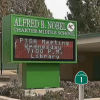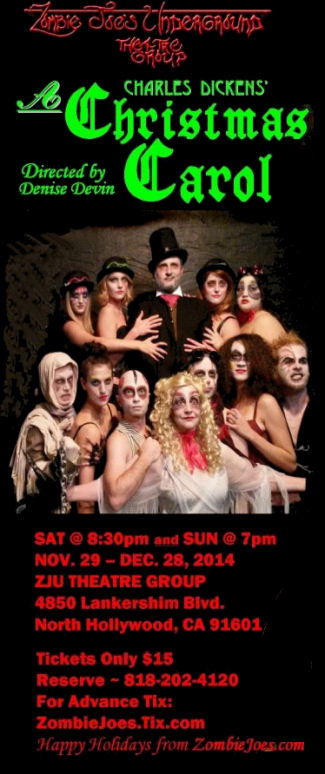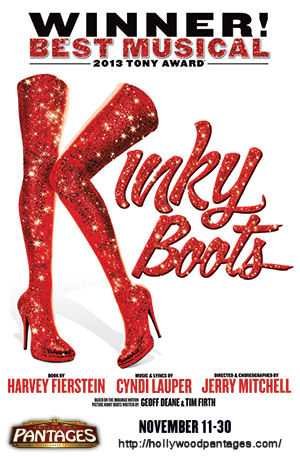
 Way back ago, in the dark ages of 2007, a theatre arts program was revived at my daughter’s then middle school. Two English teachers, Fanny Araña and Jean Martellaro, brought back a theatre arts program, and with nothing more than enthusiastic students and parents (of which we were two), these teachers energized students and created a spark of learning through theatre. That program had borrowed lights on overloaded extension cords, no sound to speak of, and a hastily assembled set. Jump ahead seven years. This program now has professional quality lighting and sound, professional quality sets, and a large cadre of students coming back as Alumni to teach and help run the program. That qualifies as a success in my book.
Way back ago, in the dark ages of 2007, a theatre arts program was revived at my daughter’s then middle school. Two English teachers, Fanny Araña and Jean Martellaro, brought back a theatre arts program, and with nothing more than enthusiastic students and parents (of which we were two), these teachers energized students and created a spark of learning through theatre. That program had borrowed lights on overloaded extension cords, no sound to speak of, and a hastily assembled set. Jump ahead seven years. This program now has professional quality lighting and sound, professional quality sets, and a large cadre of students coming back as Alumni to teach and help run the program. That qualifies as a success in my book.
Needless to say, we’ve been attending and supporting these programs since Day Zero. So it wasn’t a surprise that, even thought our daughter is safely back at UC Berkeley after Thanksgiving, we were invited to the first Tuesday Alumni Night performance of their latest show, “Joseph and the Amazing Technicolor Dreamcoat“. As I’m likely dealing with the TL;DR generation, here’s the bottom line: Especially considering this is a middle-school production, go see this. You’ll be blown away by the production values, which rival any high school or community theatre production. Although the book has its weaknesses, the enthusiasm makes up for it; although the kids are not professionals, they do an excellent job that far exceeds middle-school production expectations. But then again, you would expect no less from the Nobel Middle School Theatre Arts program.
If the production has one major weakness, it is an unavoidable one: the selected show. “Joseph and the Amazing Technicolor Dreamcoat” is a late 1960’s pop cantata, 35 minutes long— it was the first published work by Tim Rice and Andrew Lloyd Weber. After the success of Jesus Christ Superstar and Evita, it was rewritten and lengthened with some novelty musical numbers — but at its heart, it is a simple pop cantata, essentially sung through. It tells the Biblical story of Joseph from the incident with the coat of many colors through the brothers return to Egypt through pastiches of musical styles, and is — to put it succinctly — cute. It requires some strong lead vocals, and has loads and loads of choral parts. This is why it is a great middle school show. I have the original pop cantata album, and I saw the 1982 tour (with Laurie Beechman and Bill Hutton) when it was at the newly remodeled Pantages theatre — in fact, I think it was one of the first shows after the remodeling. Since then, it has been lengthened a little each time it hits Broadway again. This adds material, not depth. But none of this is anything to those who license it can change (but who would deny me the fun of railing against Sir Andrew Lloyd Weber). Further, for most people (and, truthfully, even for me), this is a fun little show.
So, you ask, how did Nobel do with the show. First, please note my observations are based on an Alumni performance — essentially, a preview night. They asked for notes from the audience, which we gave. So I expect that the performances this weekend will be even stronger and better than what I saw. As a result, I will withhold some of the comments on things I expect to be easily resolved by Thursday night. You should also be aware that these kids are not professional actors, singers, or dancers. They are middle school students who have had some training. Their voices are good with glimmers of great and occasions of not-so-great. There are some wonderful dancers (I recall some particularly spectacular ballet moves); and there are some who are a little less so. There are some who give great performances to accompany what they are saying, and there are the occasional few who overemphasize or underplay. But considering these are kids — and we’re talking the 12-14 age group here — they are doing remarkably well. I will say their performances soars over some high school performances I have seen.
Traditionally, in Joseph, the powerhouse player is the narrator. This requires a strong belting voice — something you rarely find in a public middle school. The directors (Fanny Araña, Carolyn Doherty, and Daniel Bellucci) wisely decided to change the single narrator to a quartet. The result worked quite well. The four narrators — Alana DuPre, Amanda Magaña Kamryn Siler, and Rebecca Radvinsky — worked very well together. They sang with good strength and quality, and added strong acting and emoting to their performance (making them quite fun to watch).
At the heart of this show, however, is Joseph (Jake Dalton). Joseph not only is the center of the action, but has quite a few key songs (including some of my favorites, “Close Every Door” and “Any Dream Will Do”). As Joseph, Dalton played the role well, and his singing was reasonably good. I kept hearing an odd slightly British accent, which I didn’t know was the student or the coaching. I commented on that, so it might be corrected. There were also some odd phrasings to my ear, but that could just be due to over-familiarity with the original cantata and the 1982 OBC (Original Broadway Cast). Other than being plagued by microphone problems, there were no major issues and Dalton did very good for a student.
Joseph’s brothers (Reuben (Shane “Squishy” Smith); Simeon (Colby Haney); Levi (Arno Nizamian), Judah (Kasha Bansal), Dan (Anthony Tedesco), Naphtali (Jesse “The Rock” Pacheco), Gad (Troy Richman), Asher (Nicholas Aguilar), Issachar (Brandon Moser), Zebulun (Robert Cerda), and Benjamin (Max Chester)) all played their roles well. As they were unamplified, they could use a bit more oomph in the choral numbers (but, again, that may be addressed by opening night — it could also be addressed by increasing the pickup on the drop microphones). A few of the brothers got leads in the songs; I was particularly taken with Smith’s performance in the French Bistro number (“Those Canaan Days”).
The wives (Talia Ballew, Taylor “Cookie” Carlson, Willow Islas, Hannah Protiva, Marena Wisa Wasef, Kennaya Ndu, Ellie Zahedi, Elizabeth Ramos, Daniela Johns, Rachel Khoury, Amanda Macias, Ariana DeLeon) and the chorus (Abigail Beck, Amanda Pipolo, Charlotte Doolittle, Inaya Durfied, Joann Gilliam, Jordyn Lowe, Julia Denny, Rena Rodriguez) were less distinguishable as characters — they are not called out by the story by name, and provide mostly background voices. I did like the chorus in the black leotards, although when they came out carrying the jail cell it looked like a scene from Chicago: The Musical. There were some particularly good dancers in this crew — especially the ones adding ballet moves. Alas, I couldn’t identify the good dancers by name. As with the brothers, a bit more oomph in the choral numbers would be good; drop microphone pickup can be adjusted to compensate. There were also some good performances by the three ensemble members acting as waiters in the French Bistro scene.
Rounding out the cast were the other minor characters: Pharoah (Justin Tuell), Potiphar (Jacob Lipman), Mrs. Potiphar (Brooke Kier), the Baker (David Gomez), the Butler (Spencer Goldman), Jacob (Samuel Katz), and the guards (Kevin Foster, Kyle Kaplan). A few comments here. Tuell was good, but could amp up the Elvis impersonation (one wonders how much this generation even knows about Elvis, sigh….). The character is intended to be overplayed, but less as “the King” and more as “Elvis, the King” (thankyouverymuch). This may be addressed by opening. Kier did some lovely dancing as Mrs. Potiphar; I found it interesting the (necessary) middle school script change of “come and lie with me, love” to “come and be with me, love”. I had forgotten that Jacob was more of a be seen than heard role — he has a snippet of a song in the opening and is thence quiet (although he performed quite well).
Musical direction was by Daniel Bellucci, a Nobel alumni. This was less of a “musical” direction (as in orchestrations) and more in the form of vocal direction. Bellucci had a lot of work to do — a large cast of kids who likely had little to no vocal training, doing a sung-through show. I think he did remarkable. Although there were some odd phrasings at times, and a few kids who had voices that were occasionally off, the result was spectacular for less than a semester’s worth of work and untrained talent. I don’t think you can compare vocal quality here to Equity and trained actors; for what these kids are, they did extremely well (and you’ll be very surprised). The one musical problem was more on the other side: this was intended as a sung-through show, not a typical musical where there is space after each song for applause and scene changes. As a result, the musical transitions were very abrupt and jarring, especially the spaces between songs. Some of this was unavoidable — at a school production, you have to plan for applause after each song (parents and students being proud of their offspring and friends); some might be addressed through some soundtrack editing.
Dance in this show was very good. The choreography, by parent Carolyn Doherty and Alumni students Madison Tilner, Ryan Wynott, and Michael Lertzman (MRM) worked very well. They were able to take advantage of those students with dance training, and even those without formal training moved well.
The remaining aspects of the show were primarily technical. The sets were spectacular, reflecting the transition over the 7 years. They were well constructed, realistic looking, worked well, and established place very very well. Credit goes to long time Set Consultant Dennis Kull, as well as Alumni set designer Ben Tiber assisted by parents and alumni on construction. Props (coordinated by Kamille Flack) also worked well. Costumes worked well — I particularly liked the white outfits worn by the narrators, the black leotards previously mentioned, the Elvis outfit, Jacob’s outfit, and the general desert clothing of that era. No credit is given for costume and makeup design, but the costume lead was Tam Le.
Sound and lights reflect the tremendous growth of this program — even more remarkable when you realize there is no funding support from LA Unified. This is all from parent contributions and grants. The lighting, which in the early days were some side lighting trees on overloaded extension cords and no ability to program lights (or even get to overhead lights) has grown to professional lights, on professional fixtures, with professional software. This worked effectively to build and convey the mood. Credit goes to Lighting Coordinator Terry Meadows, Lighting Designer Artur Cybulski, and Alumni Lighting Consultant Nicholas Carlson. Zarah Shahinian was the crew lead for lighting, and David Manalo and Isabelle Saligumba were the crew leads for spots. Sound is also markedly better than the early days, where there were about three stand-up mikes. Today, there are about 8 wireless microphones, two hanging microphones, and a full sound board. In general, the sound worked well, although there was a balance problem between the music and the voices at times. That may be corrected by opening night. There was also a lot of wireless microphone static, especially on Joseph’s microphone and Pharoah’s microphone. This could be placement or interference; again, I expect it to be corrected by opening. Credit here goes to Sound Consultant (and Alumni) Michael McNabb, assisted by Stephen Rabin (crew lead). There were numerous additional supporting technical credits, which I’m not going to list. I will note that Tam Le also served as stage manager, and David Manalo as house manager.
This was the first show that Fanny produced on her own; well, not really on her own, as she the help of a lot of Alumni, plus her co-directors. She did a great job, but we still miss Jean (Ms. M) (who is off in Vermont on a leave of absence). A birdie says she will be back in town for the weekend performances — we might not stay for the performance, but might just drop by to say “hi”. Fanny deserves kudos for her work on this — pulling middle-school children into a coherent team for a production such as this is worse than herding cats. However, the teams and the relationships that this intense activity builds in the kids changes their lives forever; it also changes the teacher. You could see Fanny last night just soaking up the love that 7 years of students have for her. Financial rewards for teachers are nice and necessary to sustain the family, but my belief is that the best teachers get the sustenance for their heart and spirit from the success and love of their students.
One last thank you to be acknowledged: the Nobel Administration. When this program started, the Nobel administration was at best neutral towards it. This attitude has changed as the program has proved itself. The Tuesday Alumni Night was an experiment that should be continued… for a number of reasons. First, it cements a love of students for their middle school. This is no little thing — our society encourages high school support, but middle school alumni are forgotten (take that, Paul Revere JHS — Pali contacts me, but you… never). Second, it provides the emotional sustenance for those that bring this program to life. Third, it bonds student to student. Fourth, and most importantly — from an administration point of view — it provides the school (which is now a charter school) with an alumni base to provide financial support. Think about the fact that the first cohort of students from this program are just about to graduate with their Bachelors Degrees (my daughter, who was a 7th grader the first year, is a junior). If they love this program, they love the school, and will be there to respond to fundraising appeals. This is no little thing at the middle school level, in a cash-strapped district that cannot afford the extras for the students.
There are four performances of “Joseph“: Thursday, December 4 through Saturday, December 6 at 6:30PM, and Saturday at 2pm. Tickets are $5, available through the Nobel Student Store or at the door. Additional contributions are welcome. Nobel Middle School is located at 9950 Tampa Avenue in Northridge, CA 91324 (Cross-streets are Tampa, Merridy, Vanalden, and Lassen). Enter off of Merridy.
[Ob. Disclaimer: I am not a trained theatre critic; I am, however, a regular theatre audience. I’ve been attending live theatre in Los Angeles since 1972; I’ve been writing up my thoughts on theatre (and the shows I see) since 2004. I do not have theatre training (I’m a computer security specialist), but have learned a lot about theatre over my many years of attending theatre and talking to talented professionals. I pay for all my tickets unless otherwise noted. I believe in telling you about the shows I see to help you form your opinion; it is up to you to determine the weight you give my writeups.]
There’s no theatre on the books this weekend; I’m heading off to the Annual Computer Security Applications Conference (ACSAC) in New Orleans. When I return, it will be “She Loves Me” at Chance Theatre (FB) in Anaheim in the afternoon, followed by an Austin Lounge Lizards concert at Boulevard Music in Culver City on 12/20. Right now, there is only one show booked for January 2015 – “An Evening with Groucho” at AJU with Frank Ferrente; additionally we’ll likely have the first show of the REP East (FB) season: “Avenue Q“. Ticketed productions pick up in February, with “The Threepenny Opera” at A Noise Within (FB) on February 15, “The Road to Appomattox” at The Colony Theatre (FB) on February 28, the MRJ Man of the Year dinner on March 7, “Carrie: The Musical” at La Mirada Theatre for the Performing Arts (FB) on March 14, a hold for “Drowsy Chaperone” at CSUN on the weekend of March 21, “Newsies” at the Pantages (FB) on March 28, followed by Pesach. As always, I’m keeping my eyes open for interesting productions mentioned on sites such as Bitter-Lemons, and Musicals in LA, as well as productions I see on Goldstar, LA Stage Tix, Plays411.
 I just posted my last write-up for 2014, so it is probably worth looking back at my entertainment (theatre, ♦ concerts, ◊ movies, and ⊗ other reviewed stuff) year. Here’s what I saw in 2014:
I just posted my last write-up for 2014, so it is probably worth looking back at my entertainment (theatre, ♦ concerts, ◊ movies, and ⊗ other reviewed stuff) year. Here’s what I saw in 2014:


 Growing up Jewish, I used to think Christmas was a humbug. I didn’t actively hate it (although I did, and still do, dislike the heavy marketing aspect of it and the way American society pushes it down everyone’s throats), but I also didn’t appreciate many of the Christmas rituals. That’s been changing over time; I’ve been increasingly liking the notion of the holiday as something that spreads goodwill (something that goes back to my favorite Christmas song,
Growing up Jewish, I used to think Christmas was a humbug. I didn’t actively hate it (although I did, and still do, dislike the heavy marketing aspect of it and the way American society pushes it down everyone’s throats), but I also didn’t appreciate many of the Christmas rituals. That’s been changing over time; I’ve been increasingly liking the notion of the holiday as something that spreads goodwill (something that goes back to my favorite Christmas song, 
 As you might have figured out by now, I’m a live theatre person. However, I do occasionally go to the movies, and one of those “movie days” is always Christmas Day. This year, after some back and forth on the particular movie, I settled on “
As you might have figured out by now, I’m a live theatre person. However, I do occasionally go to the movies, and one of those “movie days” is always Christmas Day. This year, after some back and forth on the particular movie, I settled on “
 As I said in
As I said in 
 I’ve written before about how I’m always up to see musicals I’ve only heard, but never seen. So back in January, when we were at the
I’ve written before about how I’m always up to see musicals I’ve only heard, but never seen. So back in January, when we were at the 
 Last night was the second live musical in a new NBC tradition: live theatre as a Christmas special. Last year, there was “
Last night was the second live musical in a new NBC tradition: live theatre as a Christmas special. Last year, there was “
 Way back ago, in the dark ages of 2007, a theatre arts program was revived at
Way back ago, in the dark ages of 2007, a theatre arts program was revived at 
 There’s something I’ve never understood about women — namely, their attraction to shoes. To most men, shoes are utilitarian things, bought not for style but for comfort. We have perhaps three or four pair, categories not by style but by function: work, gym, hiking, beach. But women have a very different relationship. Here’s an example: Yesterday afternoon I saw a show at the Pantages. They post tweets about the show on their front page, and here’s one that caught my eye: “What could be better but to see a musical about SHOES?” As a guy, I could think of many things better. So what explains my interest in the musical “Kinky Boots“, which I just saw at the
There’s something I’ve never understood about women — namely, their attraction to shoes. To most men, shoes are utilitarian things, bought not for style but for comfort. We have perhaps three or four pair, categories not by style but by function: work, gym, hiking, beach. But women have a very different relationship. Here’s an example: Yesterday afternoon I saw a show at the Pantages. They post tweets about the show on their front page, and here’s one that caught my eye: “What could be better but to see a musical about SHOES?” As a guy, I could think of many things better. So what explains my interest in the musical “Kinky Boots“, which I just saw at the